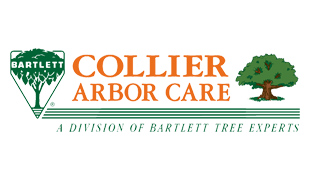|
Current Issue - Spring/Summer 2013 Show Back Issues |
|
||||||||
 The
Collier family — Brandon, Terril, Logan and Janet — along the
Tour des Trees route. The
Collier family — Brandon, Terril, Logan and Janet — along the
Tour des Trees route.
Tour des Trees:
|
 Hot-pink spring blossoms of the disease resistant Prairie Fire Crabapple
are long lasting.
Hot-pink spring blossoms of the disease resistant Prairie Fire Crabapple
are long lasting.Flowering Crabapple: Prairie FireThere are few trees that can approach the beauty of a crabapple in full bloom. But crabapples have had a reputation for being disease prone and having messy fruit. However by careful variety selection, there are several disease resistant (and beautiful) crabapples to choose from. They are valued for their smaller size, flowers and fruit that are attractive to wildlife. One of the best red leafed crabs is a Prairie Fire. This crabapple has impressive landscape appeal; long lasting hot red-pink flowers, excellent small red persistent fruit, attractive reddish bark and small form. The foliage emerges purple then gradually becoming reddish green. Best of all this variety is very resistant to diseases including scab and mildew. Prairie fire grows upright while young then rounded to 20-feet tall and wide. This is an impressive small tree with 4-season appeal and should have a special place in most landscapes. Armillaria Root RotArmillaria (or shoestring root rot) is a fungus that rots the roots of many different trees and plants. Most often it is found infecting oaks, dogwoods, rhododendron, lilac and conifers like Douglas fir but is reported on over 700 species of plants. Plants that are under stress and are growing poorly are most susceptible. Sudden changes in root environment can trigger infection. The classic situation that I see killing trees, is installing turf and irrigation in the root zone of an oak or fir and then over watering.  (Left)
Dead Oak from Armillaria due to changed root environment from lawn installation
and over-watering. (Left)
Dead Oak from Armillaria due to changed root environment from lawn installation
and over-watering.(Right) Mushrooms from the Armillaria fungus appear in the fall at the base of infected trees. Symptoms include a general decline of the plant over several years, poor growth, stunted foliage, dieback of foliage and branches. Plants will suddenly turn brown and die during the summer. Examine the lower trunk or root crown of affected plants. White fungal growth (mycelia) is found underneath the bark killing the cambium. Additionally the fungus forms black string-like strands or shoestrings (rhizomorphs) under the bark or in the soil. Honey colored mushrooms may also develop at the base of the plant in the fall. Management There is no cure for severely affected plants. They should be removed along with the stump. Armillaria can survive for many years on dead stumps and roots. Slightly affected plants should have soil removed from the root crown and allowed to be air-dried. Avoid watering the base of the trunk; keep this area as dry as possible. Replant with species that are resistant such as; crabapples, ginko, magnolia, sweet gum, incense cedar and pines. Often it takes an expert to diagnose the root rot. Our technique of exposing the root crown using the Air-Spade tool allows for easy diagnosis of Armillaria or other root problems. Maintenance Tips for Fall and WinterOK, so we’re a little late telling you that fall is the best time to plant trees and shrubs because they have all winter and early spring to grow roots and become established before summer heat and dryness come stalking. There’s still time, if you hurry, but the next best time is spring. We’re not late, though, in reminding you that late fall and winter tree and shrub fertilization is important to maintaining their health and vigor. It replenishes nutrients used up during the growing season, and where top soils have been removed during construction. It also adds nutrients not originally in the soil. Our subsurface fertilizing method injects nutrients into the root zone for easy uptake. Dormant PruningDormant season is an excellent time to prune fruit trees, and large shade and native trees. It’s easier to see the branch structure so we can prune to:
And speaking of dormant... Effectively controlling certain insect and disease problems is a year ‘round task. In fact, dormant treatments may be the only effective way to control a problem (peach leaf curl disease, for instance). In the hands of a professional, relatively non-toxic horticultural oils, coppers and daconil are considered acceptable organic control materials. They can be effective for the following: Effective Dormant Plant Treatments:
A word of caution, though: Dormant treatments aren’t silver bullets. Trees and shrubs still need year ‘round care to control disease and insect problems. |
|
Home |
Services |
The Arbor Advisor |
Garden Calendar |
About Us |
Fact Sheets |
Contact Us |
Site Map Collier Arbor Care Portland 503-722-7267 Vancouver (360) 693-6056 Site contents and design ©2013 Collier Arbor Care |







 top »
top »